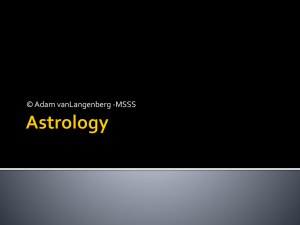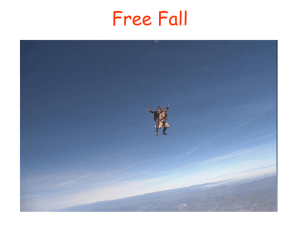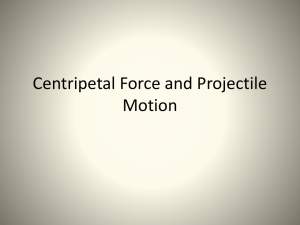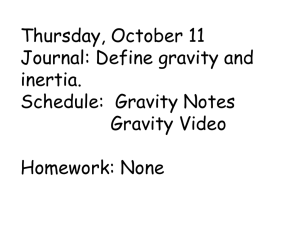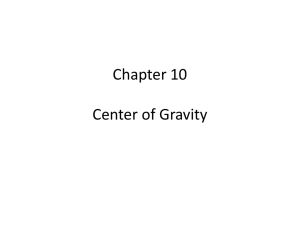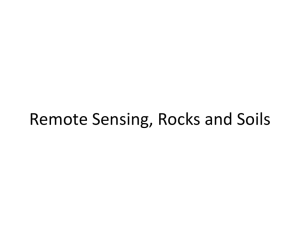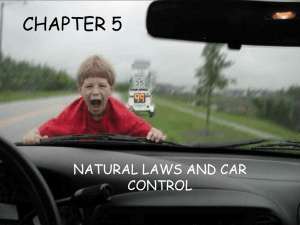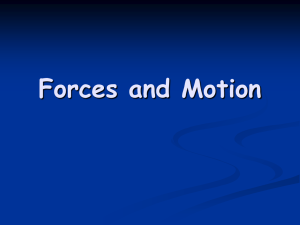Gravity - Jodrell Bank
advertisement
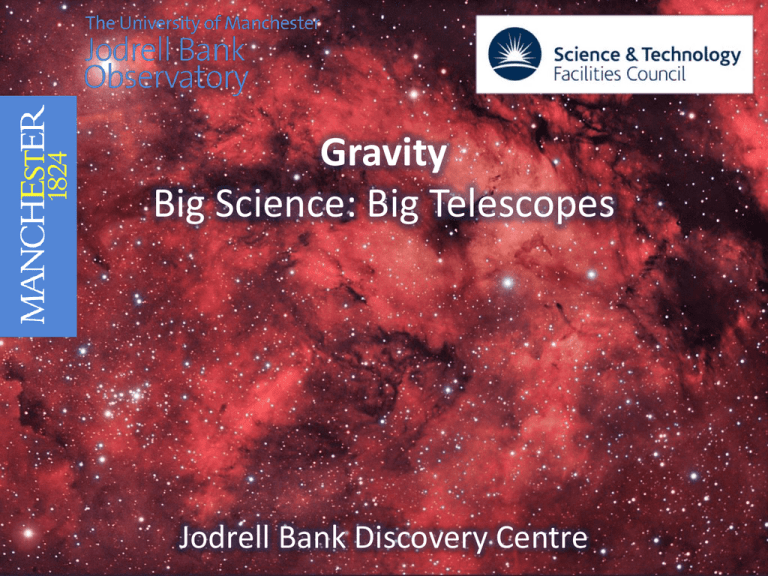
Gravity Big Science: Big Telescopes Jodrell Bank Discovery Centre Contents Part 1: Gravity on Earth – – Mass or weight? The strength of Earth’s gravity Part 2: Big Telescopes – How do we see space? Part 3: Gravity in Space – …acting on planets and stars Part 1: Gravity on Earth - Mass or weight? - The strength of Earth’s gravity Felix Baumgartner: A world record for the highest jump accomplished in 2012 You must be connected to the internet for this video to play. If it is still not playing, click the link below or copy & paste the address into your web browser: http://youtu.be/FHtvDA0W34I Part 1: Gravity on Earth Mass or weight? Isaac Newton developed the first mathematical theory which described how gravity worked, published in 1687 Part 1: Gravity on Earth Mass or weight? “Any object with mass will attract other objects with mass. They will feel a pulling force between them, due to gravity.” Mass: • The amount of matter an object is made from • Measured in grams and kilograms 1. Which arrow shows the force due to gravity that is acting on the dog? 2. What is this force called? Part 1: Gravity on Earth Mass or weight? The force due to gravity that acts on an object is called weight. Since weight is a force, it is measured in Newtons. Mass Weight The amount of matter in an object The force acting on an object, due to gravity Never changes Changes depending on the strength of gravity Measured in kg Measured in N weight = mass x ‘strength of gravity (g)’ Part 1: Gravity on Earth The strength of Earth’s gravity Practical Investigation Objective Calculate the strength of gravity on the Earth’s surface How? By measuring how much a dropped object accelerates towards the ground Part 1: Gravity on Earth The strength of Earth’s gravity Practical Investigation Before you calculate your averages, look out for “strange” readings which are far off your other readings. These are called anomalous results. They should be ignored and not used to calculate averages! What may have caused them? Part 1: Gravity on Earth The strength of Earth’s gravity Practical Investigation Objective Calculate the strength of gravity on the Earth’s surface 1. What was the overall class result? 2. Did the different groups agree? (if not, why not?) 3. Does the class result agree with the scientific community: 10 N/Kg? (if not, why not?) 4. Are there any other conclusions that can be drawn? Which object will have the largest weight? Which will hit the ground first? In 1971, during the Apollo 15 mission on the Moon, Commander David Scott dropped a 1.3 kilogram hammer and a 3 gram feather from the same height. You must be connected to the internet for this video to play. If it is still not playing, click the link below or copy & paste the address into your web browser: http://youtu.be/ZVfhztmK9zI So why don’t hammers and feathers hit the ground at the same time on Earth? Image: NASA Review of Part 1: Gravity on Earth 1. 2. 3. 4. What is mass and what units is it measured in? What is weight and what units is it measured in? Write down the equation that relates mass and weight. What is an anomalous result and why should you ignore it? In questions 5 and 6 there are two objects. Imagine both objects are dropped at the same time and from the same height. Now answer the following for questions 5 and 6: a) Which object would land first on the Earth? b) Which object would land first on the Moon? c) Which object weighs more? 5. A bowling ball and a leaf. 6. A piece of paper scrunched up into a ball and an identical, but flat piece of paper. Part 2: Big Telescopes – How do we see space? In order for astronomers to study gravity in space, they need to make observations of planets and stars with telescopes. But why do they need to study gravity? Image: NASA/ESA Part 2: Big Telescopes How do we see space? There’s still a lot we don’t know! To answer all these and more: astronomers need telescopes! Image: NASA/JPL-Caltech/S. Willner Part 2: Big Telescopes How do we see space? Telescopes are like giant eyes, collecting light to see. This is the Very Large Telescope and a picture of a galaxy taken by it. • • • • Owned by the European Southern Observatory • 5 countries involved, including the UK Made up of 4 telescopes, each 8m across 2.6 km high, on a mountain in Chile. The air is very thin here, so it has a clear view of space Uses a laser to measure changes in the air. This allows it to take even better quality images Part 2: Big Telescopes How do we see space? But astronomers aren’t just looking at light! NASA’s James Webb space telescope will look deep into space by detecting infrared radiation The European Space Agency & NASA SOHO satellite looks at the Sun in light and in ultra-violet rays The 76 metre Lovell Telescope at Jodrell Bank in Cheshire detects radio waves from objects in space Part 2: Big Telescopes How do we see space? These different types of radiation show us hidden things… The TheSun Sunasasseen seenininthe visible ultraviolet light Image: ESA/NASA/SOHO Part 2: Big Telescopes How do we see space? Right now scientists and engineers around the world are building new, bigger and better telescopes But why are big telescopes better than smaller ones? • Big telescopes collect more radiation • Fainter objects can be seen • Like a pupil growing in dim light! Big telescopes also create better quality images Part 2: Big Telescopes How do we see space? This will be the biggest telescope in the world: The Square Kilometre Array • Planned for 2020, it will be the most powerful radio telescope ever • It will be made up of thousands of dishes spread over Australia and South Africa • Connected together, these dishes will work as one giant telescope • It will be so powerful, it could detect a mobile phone going off on Neptune! • It will test our theories of gravity and tell us about the very early universe Part 3: Gravity in space – …acting on planets and stars Image: ESO 1. Which arrow shows the force due to gravity that is acting on the astronaut? I None: There is no gravity in space! Part 3: Gravity in space …acting on planets and stars Practical Activity Objective Use a model to imagine how gravity acts on objects Image: Johnstone This model is based on Albert Einstein’s theory of General Relativity, published in 1916. This, for the first time, explained where the force of gravity came from. Part 3: Gravity in space …acting on planets and stars Practical Activity Objective Use a model to imagine how gravity acts on objects The sheet represents space. Objects on the sheet represent stars and planets. Watch how objects are attracted together! 1. Try keeping two objects separate. How close can they get, before gravity pulls them together? 2. How does the mass of an object affect the strength of gravity around it? 3. Can you get a planet to orbit a star? 4. Can you get a planet to orbit two stars? 5. What are the similarities and differences between this model and real life? Part 3: Gravity in space …acting on planets and stars Gravity keeps satellites in orbit around the Earth Animation: ESA Part 3: Gravity in space …acting on planets and stars Gravity keeps planets in orbit around stars Animation: Silver Spoon Part 3: Gravity in space …acting on planets and stars Gravity groups stars together into galaxies Image: Galaxy NGC1300; ESA/NASA Part 3: Gravity in space …acting on planets and stars Our universe contains hundreds of billions of galaxies Image: ESA/NASA Review of Part 3: Gravity in Space 1. Place these objects in order from smallest to largest: Galaxy, universe, planet, star. For the following questions, think about the model of gravity you used. Decide whether the statements are true or false. If the statement is false, write a correct statement. 2. Earth’s gravity pulls objects downwards, towards the South pole. 3. There is no gravity in space. 4. The more mass an object has, the stronger its force of gravity. 5. A planet’s gravity pulls objects towards the centre of that planet. 6. The force of gravity extends outwards from objects. 7. Gravity sometimes pushes objects apart. 8. The force of gravity from an object stays the same no matter how far away you are from the object.
